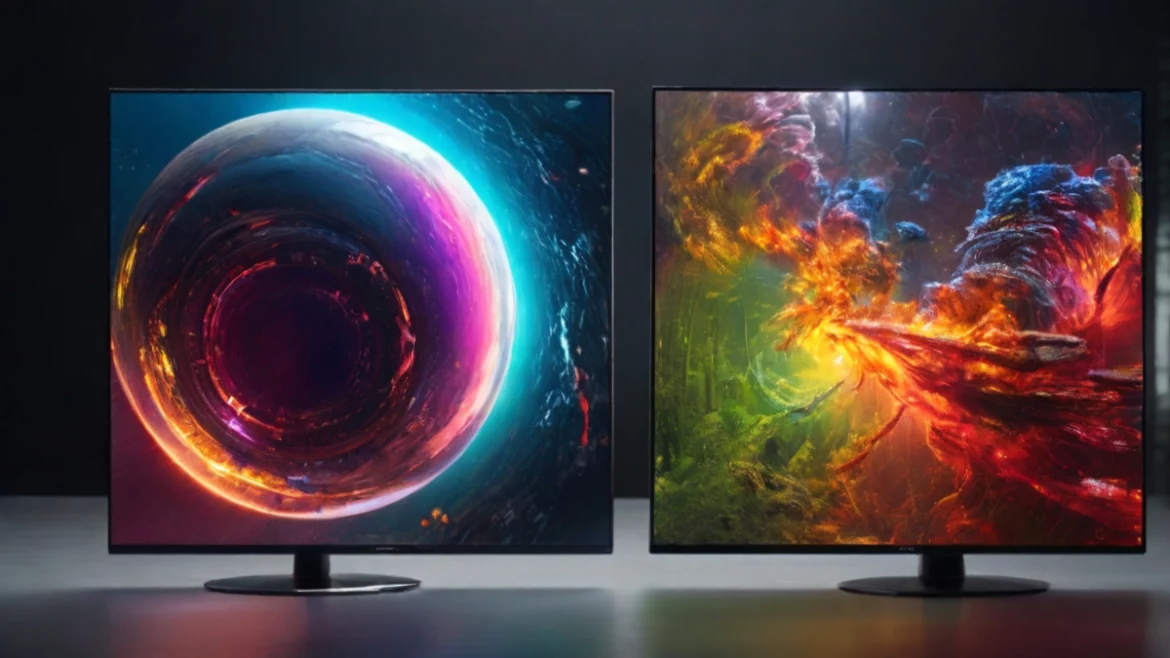QLED vs OLED are one letter apart, yet these two kinds of TVs take distinct approaches to creating an image on the screen. Though the gaps have closed in recent years, each has advantages and disadvantages.
Your budget, the size of the room, and your level of picture quality sensitivity will all determine the best kind of TV for you. We’ll explain OLED and QLED to you so you can choose the one that best suits your needs.
OLED: What Is It?
The acronym for Organic Light-Emitting Diode is OLED. Every pixel in an OLED screen functions as a separate light source. Additionally, the pixels contain small layers of organic material that glow when power is provided. Red, green, or blue color filters are included in the pixels. Thanks to these pixels, OLEDs can provide precise and uniform colors across a screen.
While LG was the sole manufacturer of OLED panels, Vizio, Sony, and Samsung now also produce TVs using this technology.
QLED: What Is It?
The term “Quantum-Dot Light-Emitting Diode” (QLED) is similar to “OLED,” but it is the only similarity between the two.
In actuality, QLEDs are a liquid crystal display (LCD) with an additional layer that enhances the display’s color. They illuminate the screen’s pixels using an LED backlight or occasionally several backlights. The pixels and the quantum-dot layer are positioned between each other. There are several sizes of dots, and every size corresponds to a particular hue. The outcome is more saturated color than on a conventional LED LCD TV and more akin to an OLED.
Although Samsung was the original manufacturer of QLED TVs, other companies such as Sony, LG, TCL, Hisense, and others are now using the technology.
Distinguishing Features of QLED vs OLED?
On paper, QLED TVs win out since they have more brightness, a longer lifespan, are less expensive, and don’t have a burn-in risk. On the other side, OLED TVs are fantastic for gaming, have a deeper black level, a greater viewing angle, consume less power, and may even help you sleep better at night. However, choosing between the two is subjective because they are both excellent. While OLED technology shines when it comes to controlling the lighting in your room, QLED technology is a better all-rounder.
Which is Superior, QLED or OLED?
Now, let’s compare OLED vs QLED in the key performance areas buyers look for in a TV: brightness, contrast, viewing angles, and other essential factors. Each of these matters when spending a significant amount of money on a new TV.
The QLED vs OLED difference between an image’s brightest and darkest areas is known as contrast. To attain strong contrast ratios, a TV need not make the bright areas as bright as the dark areas if it can give a black dark region. Because it can go entirely dark when necessary, OLED is the clear winner for black levels.
In contrast, QLED TVs have to decrease their LED backlights and block the residual light, which is a difficult task to accomplish flawlessly. It may cause “light bleed,” which is when light leaks from a bright region onto an area of the screen that should be black.
QD-OLEDs and Mini-LED QLEDs
To add to the confusion, different versions exist for every kind of screen. There are thousands of LED backlights on mini-LED QLEDs, which is a significant increase over normal QLEDs. Better contrast and reduced blooming are achieved with more backlights, producing an almost OLED-like picture quality.
A quantum-dot layer is added to an OLED panel using QD-OLEDs. The end product is a brighter OLED TV with more vivid colors while keeping the contrast and broad viewing angles that set OLEDs apart from QLEDs.
Final Words
Choosing the ideal TV for your needs was simple until acquiring an OLED if visual quality is your top priority. If you’re motivated by price and brightness, get a QLED. However, OLED brightness has increased, and mini-LED technology has reduced the difference between QLED vs OLED picture quality. For the time being, following conventional wisdom usually works. And acquire a QLED if cost is the decisive factor. However, choosing a particular technology may only matter briefly since both will look amazing and have enough brightness regarding picture quality.

